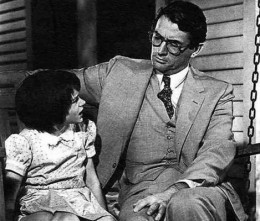Obit for Modern-Day Medici Who Made “Mockingbird” Possible

Somewhere in literary heaven, there’s a nine-gun salute happening in honor of Michael Brown, who has died at age 93. His entire obit is a delightful read. A cryptographer and Cabaret songster, he made his money writing cheeky, clever industrial musicals, which was an actual job some people had in midcentury America:
Industrial musicals boasted professional casts — Florence Henderson and Dorothy Loudon are alumnae — and opulent production values. In an era when a Broadway musical might cost $500,000, its industrial counterpart could cost as much as $3 million. They also had high-level composers and lyricists, including Jerry Bock and Sheldon Harnick, known widely for “Fiddler on the Roof” and less widely for “Ford-i-fy Your Future,” the Ford Tractor show of 1959.
For DuPont, Mr. Brown created ‘Wonderful World of Chemistry,’ a show that in all likelihood has had the greatest number of performances of any musical in history. … Presented in the DuPont pavilion at the 1964 World’s Fair in New York, it was a rare example of an industrial musical open to the public. The show, written, produced and directed by Mr. Brown, was performed at least 40 times a day, by at least eight companies, for months on end. Seen by an estimated five million people, the show, 24 minutes long, played some 17,000 performances. Broadway’s longest-running musical, “Phantom of the Opera,” by contrast, has had about 11,000 performances since opening in 1988.
But the best part of the obit tells the story of when he sent a letter to his friend, the struggling writer Harper Lee, and changed her life.
“I opened it and read: ‘You have one year off from your job to write whatever you please. Merry Christmas,’ ” Ms. Lee recalled in a 1961 essay in McCall’s magazine in which she did not identify the Browns by name. “It’s a fantastic gamble,” Ms. Lee, in the words of her essay, told Mr. Brown. “It’s such a great risk.” “He looked at me,” the essay continued, “and said softly: ‘No, honey. It’s not a risk. It’s a sure thing.’ ”
The result, “To Kill a Mockingbird,” was published in 1960, and for nearly a half-century afterward the Browns and Ms. Lee kept their secret. News of the gift — Ms. Lee insisted that it be a loan — came to light in 2006 with the publication of “Mockingbird: A Portrait of Harper Lee,” a biography by Charles J. Shields. In an interview last week, Ms. Brown declined to specify the amount of the loan but said it had long since been repaid.
To Kill a Mockingbird became a best-seller when it debuted in 1960, won the Pulitzer Prize in 1961, and became a well-respected cinema classic when it was adapted for film in 1962. According to NPR, it has never gone out of print. That is what you might call a good investment.
Support The Billfold
The Billfold continues to exist thanks to support from our readers. Help us continue to do our work by making a monthly pledge on Patreon or a one-time-only contribution through PayPal.
Comments